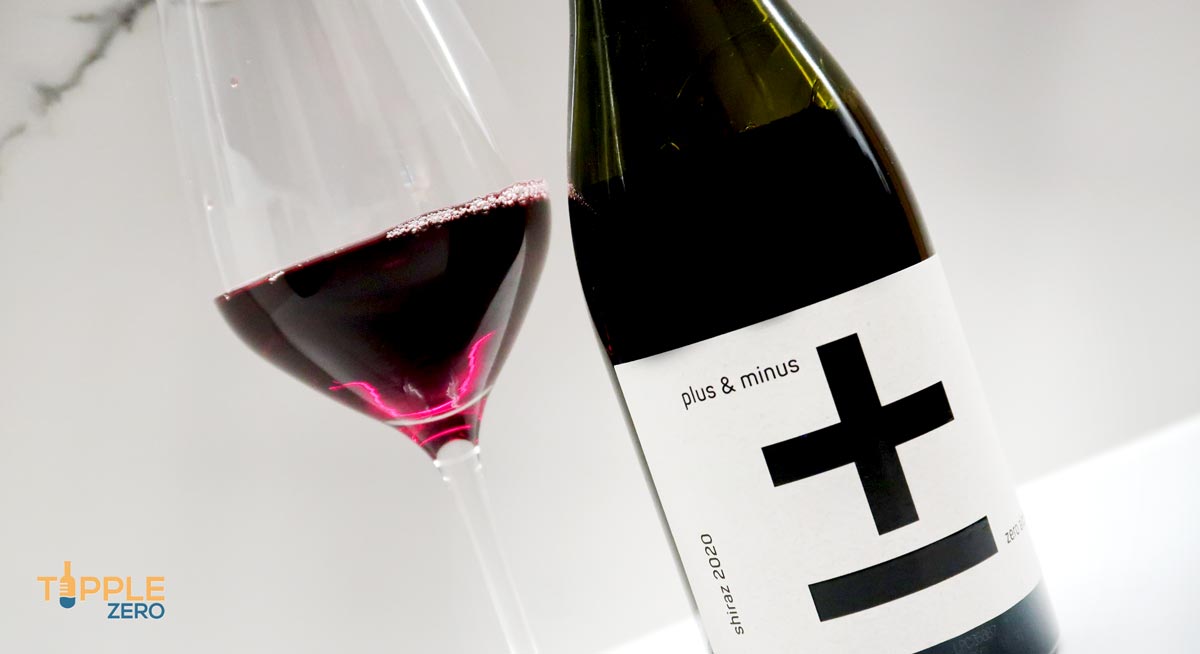Learning how to store wine and making sure you stop wine from going bad is vital if you want to avoid wine turning to vinegar and instead have a delicious glass full of complex flavours that can be enjoyed for years to come. Below are some of the things I’ve learned over the years.
Storing wine properly requires keeping your wine between 15-20 degrees, away from sunlight & UV light, away from humidity & boxed to keep it safe from water damage & pests. You can also store your wine in a cool dry location, purpose-made wine cellar or specific temperature & humidity-controlled wine fridge.
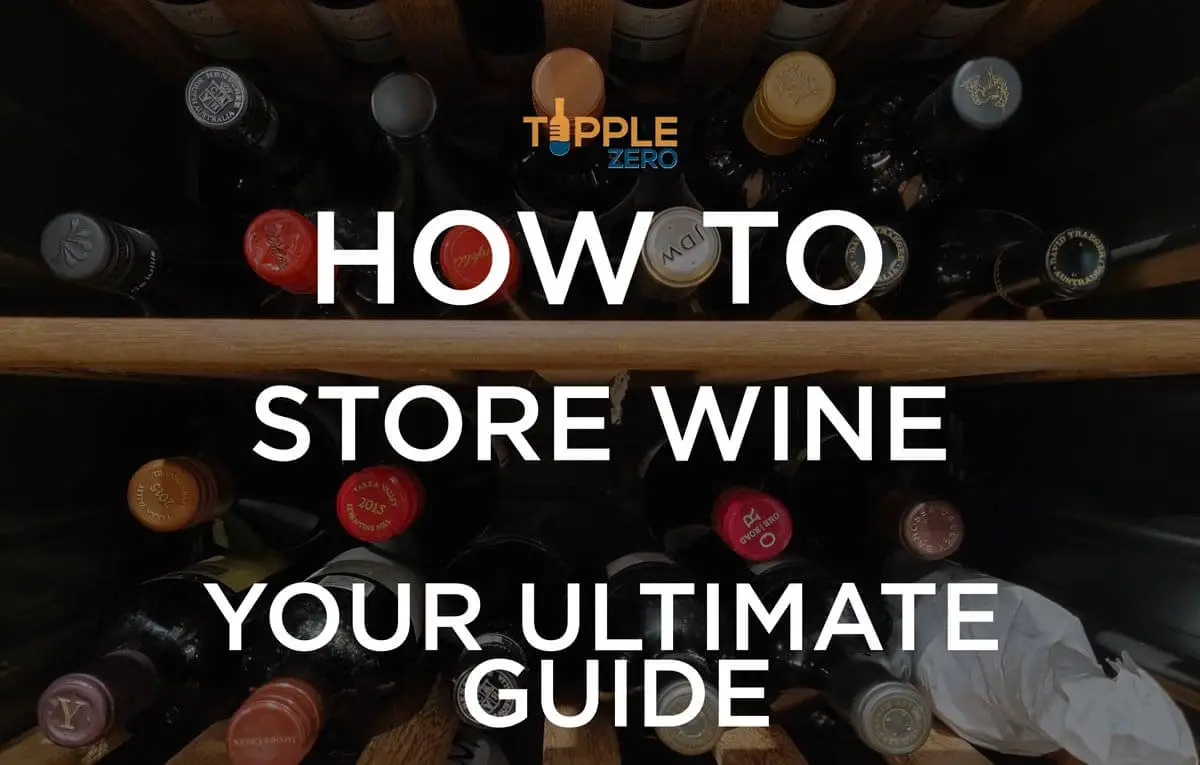
1. AVOID HEAT ABOVE 20 AND BELOW 10 DEGREES CELSIUS
As a general rule, wine should be stored at between 15 to 20 degrees Celsius or 59 to 68F Fahrenheit. This provides the wine with a balance of enough temperature to allow it to develop complexity and age well, all while ensuring it will have longevity in the bottle and last for many years to come.
What Temperature Should I Store Wine At?
In the book Wine Making Basics it is shown that, when contrasted against other storage factors, the impact of exposing the wine to:
- prolonged periods of temperatures above 20 – 25 degrees Celsius or 68 Fahrenheit; or
- short periods (just a matter of hours) above 40 degrees Celsius
is the most critical element in causing the wine to degrade in taste, appearance or spoil.
While there is no best one ideal temperature to store wine due to the way in which we want our wines to develop and mature with age, studies have shown that the range mentioned above of 15 – 20 degrees Celsius or 59 to 68F Fahrenheit is most suitable to get the most mileage and maturity out of wine.
Can I Store Wine In The Fridge?
While storing wine below 10 degrees Celsius (or 50 degrees Fahrenheit) will prevent wine from going bad due to heat, it will also slow down the natural aging process that occurs between the recommended temperature range according to recent findings.
This ultimately means any wine stored below 10 degrees Celsius (or 50 degrees Fahrenheit) will take quite a bit longer to mature and develop.
Wine Temperature Storage Key Tip
Managing heat exposure and balancing temperatures are the key to helping slow down the premature aging of wine and help it maintain the fruity, vibrant and fresh appearance, aroma and taste.
If you’re storing your wine at home, I would recommend keeping a close eye on temperatures and I’d recommend using a battery-operated Wi-Fi temperature logger that you can place in, on top of or with your wine.
This way it will send you a push notification and alerts when the temperature range your wine is stored at falls outside the acceptable range you set.
I have invested in a few different models and have been testing them recently, currently, I am focused on using the Govee Smart Thermo-Hygrometer that I mention down below at number 3 due to its feature-rich app that makes keeping track of things a breeze.
I’ll have my full review up soon, but in the meantime, you can find out more information and check the price over on Amazon here.
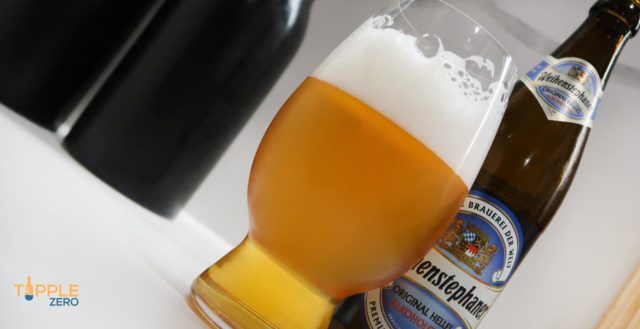
2. AVOID DIRECT SUNLIGHT OR EXCESSIVE FLUORESCENT LIGHT
Keeping wine out of and away from direct sunlight and excessive fluorescent light is a critical step that you need to take in order to make sure your wine stays fresh and in the best drinking condition for years and even decades to come.
Why Store Wine Away From Light?
If you’re looking to understand why to keep wine out of sunlight the answer sits squarely in a series of academic studies that have shown that light in all its many forms have been discovered to be a key element in causing the wine to oxidise.
It was also shown that keeping wine out of sunlight is an extremely important factor that is second only to the need to protect wine from heat. The reason for this is largely due to the way UV light reacts with and changes the chemical compound in the bottle.
Interestingly it is not only sunlight light that causes wine to spoil, oxidise or go off. A recent study conducted a review on how ‘supermarket conditions’ impact the state of wine (think those non-alcoholic wines on a shelf or those bottle shops selling that grange).
The study showed that after the wine was exposed to artificial light at 25 degrees for 12 hours a day over a ten-month period, the wine saw a highly increased level of degradation of colour and browning and detrimental change to the flavour profile.
What Does Light Affected Wine Taste Like?
A wine that has gone bad from sunlight has a series of distinct calling cards, so here are key things to look out for in both red and white wine which will indicate your drop has had some significant light exposure:
- White wine: Light can lead to a decrease in those brilliant fresh and citrus-based flavours in white wine and lead to an increase in “cooked cabbage, corn, wet wool/wet dog and soy/marmite” aromas.
- Red wine: Light will likely cause some variation in the colour of your red wine, this will likely occur by way of browning of the wine and a colour fade as the wine circles out towards the edges of your glass.
How to store wine away from Light
Storing wine away from light can range from cheap and simple all the way through to bespoke and expensive, these include:
- boxing wine up and keeping it somewhere cool (see more below);
- using a wine specific fridge (read more down below);
- building a specific cellar (find out more below).
The steps above will mean you’ll be able to enjoy your favourite N/A Rose or sparkling Vinada for years to come.
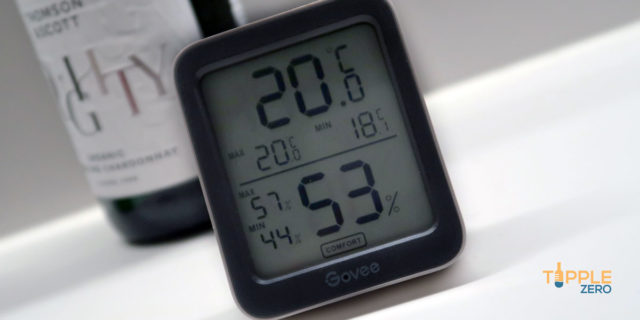
3. MONITOR AND CONTROL HUMIDITY (AND TEMPERATURE)
As a general rule, the most common way humidity can cause the wine to go bad is due to moisture getting trapped in the cork compound resulting in a well-known phenomenon called ‘cork rot’, which taints the taste making it undrinkable. If you’re storing screw cap wines, this is less of a concern for you.
Why it is Important To Track Humidity
Monitoring humidity when storing wine is important in almost all climates, not just those dense and humid tropical climates or those supremely cold and dry climates. For example, locations like Melbourne in Australia, Auckland in New Zealand, or Miami out in Florida, all often find themselves with extended periods of 100% humidity.
To make sure you’re keeping those precious corks in prime condition, keeping track of humidity and temperature is a really worthwhile exercise and I recommend making sure you keep an eye on it. The good news is, keeping track of humidity is cheap, easy and can be taken care of right from your phone with the help of a cheap, battery-operated, Bluetooth controlled unit that records temperature and humidity.
How to Track Temperature and Humidity For Wine
I’ve been using the Govee Smart Thermo-Hygrometer that comes with a great app and push notifications if things get a little above a comfortable range. This option might not be the best one for you so take a look at the post where I compared 3 cheap and easy to use units that record temperature and humidity.
If you’re looking to level up your wine storage game, other options I touch on below are:
- purchasing a speciality wine fridge;
- the building or converting a space to be a speciality wine cellar.
While these may be pro-level moves they’re great options if you are looking for something more advanced. Take a look below at whether these two options are something you should consider.
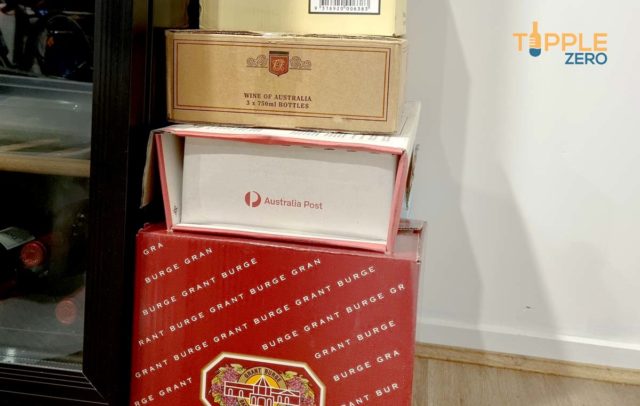
4. KEEP YOUR WINE BOXED IN STYROFOAM (OR CARDBOARD)
Storing wine in a Styrofoam box is a great way to keep your wine away from the light but also make it easy to store. Styrofoam helps to keep wine protected against water and keep it cool, while also being an easy and safe way to stack and store a large amount of wine.
Storing Wine in Cardboard Boxes
If you don’t have access to or want to keep things a little more low impact (like we do when we’re storing inside, like the photo above), cardboard is also a great option – particularly given the fact it lets you entirely block out light. However, I would keep in mind that I’ve found it can suffer from random failure in its integrity when stacked.
For this reason, I would recommend keeping things stacked no more than 2 boxes high – 3 if you really must and you’ve got walls to box them against.
How Do I Store Wine?
We’re lucky enough to have a cellar that is built around storing in Styrofoam, while not pretty it means we can keep up to 3500 if we’re really diligent.
We found Styrofoam works best as:
- you’re able to keep up to 20 bottles in a single Styrofoam box (depending on size and style);
- Styrofoam lasts for years and does not break easily.
- You can stack boxes with the peace of mind that they are stable and secure, and
- the nature of the Styrofoam means that once cool it helps keep the wine bottles within it cool.
On the topic of low-impact and Styrofoam, thankfully the majority of boxes we use have been with us for the vast majority of the 20-year journey or have been able to be reused for many different uses.
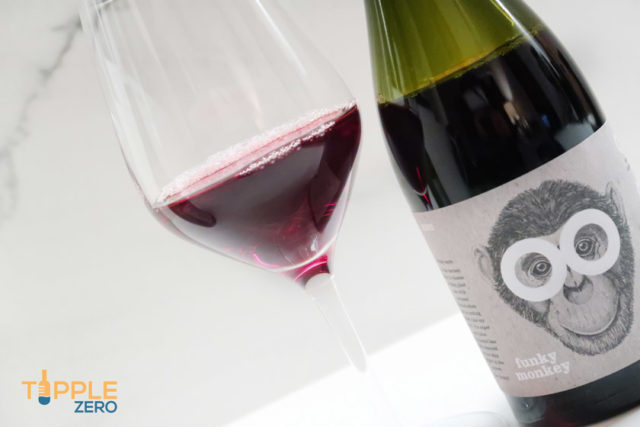
5. BUILD OR USE A SPECIFIC WINE CELLAR
Wine cellars are a great purpose-built room that allows you to build in the best wine storage conditions by design. For most people, this will look like creating a room that is either built below ground or artificially temperature and humidity controlled while taking into account limiting direct sunlight.
Having dug out our cellar by hand, I can attest to the great appreciation I have for cellars. They are truly a great way to store wine with a semi-‘set it and forget it’ approach.
| Wine Cellar Pros | Wine Cellar Cons |
| Natural temperature and humidity controlled environment perfect for storing wine | Expensive to design, dig out or build and kit out |
| As close to a natural set it and forget model as it gets. | It Will require a significant investment of time and money |
| Gives you a purpose-built setup and dedicated location to store all your wine in one place. | If built into the ground/below ground, potential challenges with mould. |
Wine Cellar Drawbacks
While cellars are a great option, one thing to keep in mind is that those built into the ground or beneath it are often prone to, mould due to their high levels of humidity. We’ve found this firsthand and had to manage it over the years.
The best way to reduce wine cellar humidity is to:
- monitor the humidity to make sure the relative humidity remains around that 70% mark;
- use a dehumidifier if things get particularly sticky and humid; and
- if humidity is insistent or out of the ordinary identify the issue and get it resolved ASAP, as mould is not good for anyone!
Short of a wine cellar, storing wine under stairs is a great option if you don’t have access to a cellar my only word of warning would be to make sure that the area is dry, away from sunlight and a constant and cool temperature.
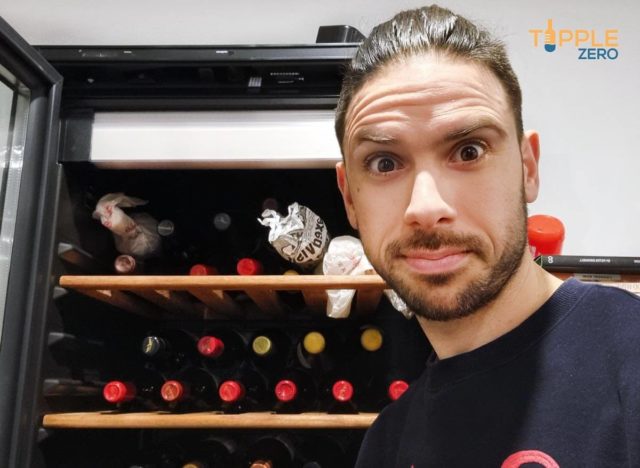
6. GET A SPECIFIC TEMPERATURE & HUMITITY CONTROLLED WINE FRIDGE
Like we have touched on above, the temperature can affect the taste of wine. However, it is also possible to prevent or minimise the loss of those fruity flavours if wine is stored at low temperatures.
However, unlike food, often for wine there can be a ‘too cold’ zone due to the need for wine to be subjected to some warmth to help it age and develop.
An interesting fact is that where wine is kept below that 10 degree Celsius (50°F) mark it will often lead to slower aging.
Over the years we have used a few different drinks fridges they have ranged from:
- regular fridges;
- small cheap bar fridges; and
- a wine specific Vintec wine fridge.
I spoke to a couple of wine fridge retailers who say most people find the smaller 35 or at most 100 bottle variants more than sufficient for their wine storage needs.
When to Use a Wine Fridge
Storing wine in a wine fridge is for anyone who wants to ensure their wine get the best protection for long term cellaring and experience wine as it has been enjoyed traditionally in France or at traditional ‘cellar’ conditions.
A large wine fridge like ours may not be for everyone but I have listed some of the different sized options that you might want to look into below.
- 170 bottle Vintec fridge (AU Links: Appliances Online) (we have this fridge)
- 148 Bottle Vintec Wine Fridge (AU Links: Appliances Online)
- 50 Bottle Vintec Wine Fridge (AU Links: Appliances Online)
- 20 Bottle Vintec Wine Fridge (AU Links: Appliances Online)
While I can vouch for Vintec, I’ve never used Triomph but I’m including the 28 bottle storage cabinet as a cheaper option for you to explore if Vintec seems a little beyond your range.
| Wine Fridge Pros | Wine Fridge Cons |
| Truly set and forget | Can be large |
| Peace of mind | Require constant electricity supply |
| Come in a range of sizes and can be built into cabinetry | Expensive (albeit less expensive than a wine cellar) |
| New models operate silently. | Older second-hand models may be noisy. |
If it looks like you’re going to run out of room, what better incentive to get onto enjoying those beautiful bottles.
Is a Wine Fridge Noisy?
Having slept next to this fridge for over 10 years, I was able to sleep without issue and can confirm new models are effectively silent and unless it is 2am in the dead of night, with your ear right near the unit – you’re not going to hear a thing out of them!
A word on if you’re looking to purchase older second-hand models, naturally as technology improves mechanics also improve this means some older models may be a little noisier, which may be something to consider depending on where the unit will be stored.
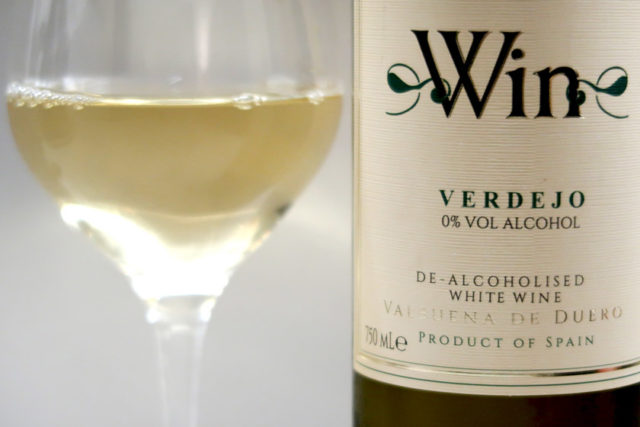
7. STORE YOUR WINE LYING DOWN (IF IT HAS A CORK)
Storing wine on its side is one that has fallen away more recently, historical research recommended cork capped wine stored on its side in a dry location between 15 – 20 degrees however more recently the mood is starting to shift based on the view that there may not actually be a detrimental impact to having wine out of contact with the cork.
If you’re storing or cellaring wine with corks, it really comes down to the one-percenters and making sure all bases are covered. If this, is you I’d recommend storing wine on its side:
- Due to it being easier to store and manage space; and
- Help reduce any risk linked to potential cork issues.
If you can’t keep bottles on their side, rest assured that the latest research shows your bottles are not likely to be impacted in any significant way.
| Traditional Cork Pro | Traditional Cork Cons |
| It’s traditional and there is nothing quite like that pop of a cork. | Corks are prone to rotting and degradation. |
| Allow for the aging of wine due to the way the cork ‘breathes’. | Can be contaminated by moisture and cause the wine to be tainted and become undrinkable. |
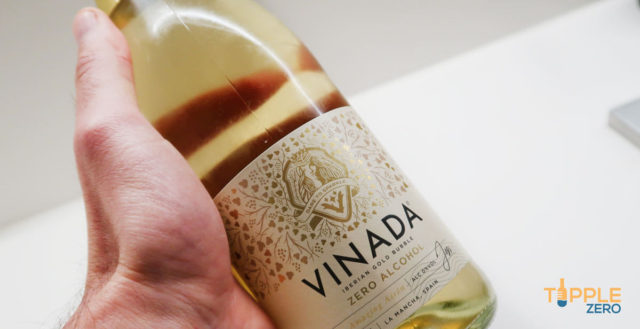
8. THE CLOSURE (CORK/SCREW TOP) CAN IMPACT YOUR WINE
While I have picked up a lot over the years there are a few things I think are worth sharing as interesting facts to keep in mind when you’re looking to store wine:
- the type of stopper your bottle has – these include traditional natural cork, a processed and manufactured sterilised cork, synthetic stoppers, and screw caps. Each of these has its benefits and drawbacks. I’ll be sure to write more about these in another post!
- The move to screw caps, while great for preserving wine and its ability to prevent spoiling does, due to the airtight approach screw tops take, lead to wine aging differently and not getting to breathe as it would naturally over time (as is the case with the use of cork stoppers).
- Screw top closures can lead to reductive characters in the wine. These are best described as those unpleasant odours that you would commonly associate with rotten eggs, sulphur and swamplands.
| Screw Cap Pros | Screw Cap Cons |
| Airtight, spoilage is extremely low meaning winemakers get the most wine to market. | The wine fails to breathe and age like it would with a traditional cork closure |
| Wine can be kept confidently for years without concern of it having turned bad or gone off. | Screw caps have been found to introduce reductive characters and really unpleasant smells such as rotten eggs and sulphur. |
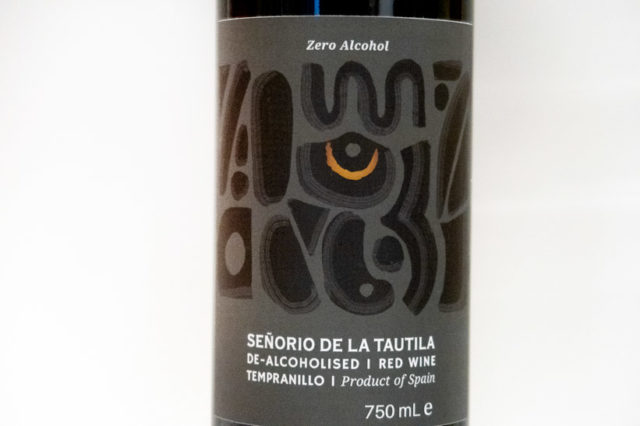
FINAL THOUGHTS: RECOMMENDATIONS
As each bottle of wine has its own ecosystem that delicately balances science and art that have been struck by the winemaker. This means to make sure that you get the most out of the bottle and it will be ready to drink for decades to come it will need some TLC from you.
Recommending a course of action, I know wine fridges are a real luxury item and cellars are hard to fit into existing houses, so, for this reason, I would recommend:
- getting a Bluetooth or Wi-Fi humidity and temperature meter like the Govee Smart Thermo-Hygrometer;
- boxing wine up (be careful if stacking cardboard);
- keeping it in a cool dry location; and
- moving it to a cooler spot should its home get too hot
If you can afford it, the Vintec wine fridges like the middle of the range 50 bottle option, are the best all-around way forward as they are perfect for keeping your bottles at a constant temperature and for giving you peace of mind that your bottles are being looked after 24/7.
